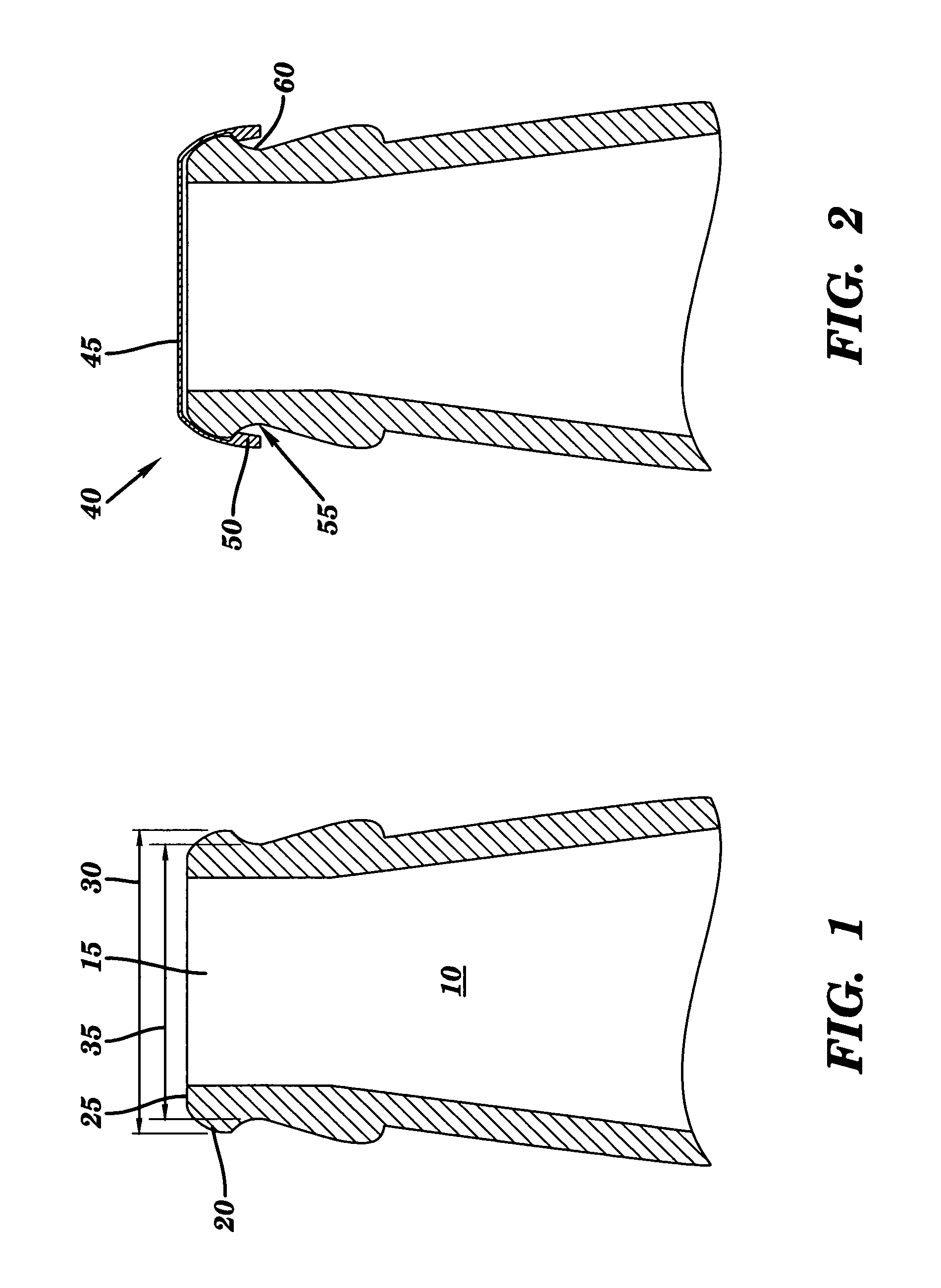Non-slip bottle opener
a bottle opener and non-slip technology, applied in the field of bottle openers, can solve the problems of the prying elements slipping off the lower edge, the metal bottle caps are not removable by hand, and the conventional bottle cap opener is especially susceptible to slipping
- Summary
- Abstract
- Description
- Claims
- Application Information
AI Technical Summary
Benefits of technology
Problems solved by technology
Method used
Image
Examples
Embodiment Construction
[0025]FIGS. 3–6 and 9–10 depict an improved bottle cap opener 100 according to the present invention. The opener 100 is shown in side view in FIGS. 3 and 9 and in isometric view in FIG. 4. An exploded view of a nose portion of the opener is shown in FIGS. 5 and 10. The opener 100 may be formed with a uniform thickness in the range of about 1.5–5.0 mm, (0.06–0.2 inches) but the preferred thickness is 2.3 mm, (0.09 inches). Ideally, the bottle cap opener 100 is formed from a metal having a hardness that is harder that the hardness of a conventional bottle cap so that the opener 100 will not be worn down by long term use. Accordingly, the opener 100 may be formed from a material having a Brinell Hardness above 200 to provide excellent wear resistant properties however, the opener 100 may also be formed of softer materials with a Brinell Hardness above 150 being acceptable.
[0026]Preferably the bottle cap opener 100 is formed from a corrosion resistant metal or from a metal that is surfa...
PUM
 Login to View More
Login to View More Abstract
Description
Claims
Application Information
 Login to View More
Login to View More - R&D
- Intellectual Property
- Life Sciences
- Materials
- Tech Scout
- Unparalleled Data Quality
- Higher Quality Content
- 60% Fewer Hallucinations
Browse by: Latest US Patents, China's latest patents, Technical Efficacy Thesaurus, Application Domain, Technology Topic, Popular Technical Reports.
© 2025 PatSnap. All rights reserved.Legal|Privacy policy|Modern Slavery Act Transparency Statement|Sitemap|About US| Contact US: help@patsnap.com



